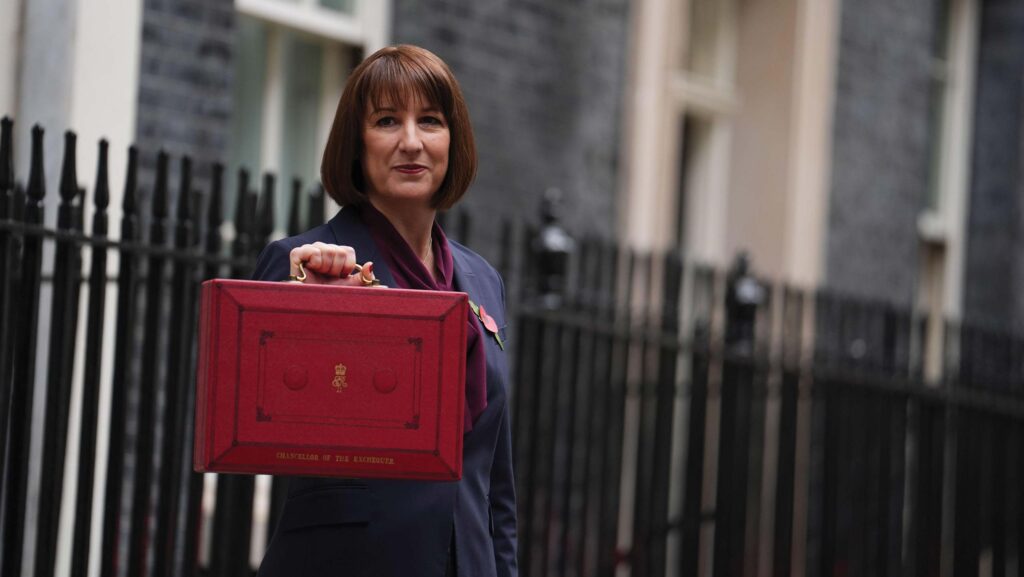Budget delivers heavy cut to farming’s inheritance tax reliefs
 © Jordan Pettitt/PA Images/Alamy Stock Photo
© Jordan Pettitt/PA Images/Alamy Stock Photo Chancellor Rachel Reeves has slashed farming’s favourable inheritance tax reliefs in this week’s Budget, limiting 100% agricultural property relief and business property relief to the first £1m of value.
Above that threshold, there will be 50% relief on qualifying assets, giving an effective inheritance tax (IHT) rate of 20%.
The move was described by lawyer Ben Sharples, a partner in Michelmores, as a hammer blow to the ambition of maintaining viable farms.
“An effective tax rate of 20% on everything above £1m is much more severe than many were expecting,” he said.
The move has been widely condemned by the NFU, the Country Land and Business Association (CLA) and the Tenant Farmers Association (TFA), land agents and other farm advisers, saying that it will cause the break-up of family farms and hamper the UK’s ability to meet environmental commitments.
See also: Final plea on tax relief to Chancellor Reeves before budget
TFA chief executive George Dunn fears for the future of tenanted holdings, saying that large let private estates would be hit more heavily as they will be more likely to breach the £1m limit and that it could lead to a significant amount of disposals.
NFU president Tom Bradshaw described it as a disastrous budget for family farmers, and especially tenant farmers.
Change from April 2026
The change will take effect from April 2026, heralding another busy year for tax and legal advisers as families restructure land, farms and other assets to beat the deadline.
After that, it is expected the move will force more land onto the market in order to meet IHT bills.
Chancellor Reeves said that three-quarters of farms would be unaffected by the reduction in IHT reliefs, however, the CLA said it would affect 70,000 farms.
Nil rate bands stay in place
The £1m threshold will apply in addition to existing nil-rate bands, and transfers between spouses and civil partners will continue to be IHT-free.
Separately from the £1m relievable threshold, personal nil-rate bands applying before IHT starts being charged are being frozen for a further two years, until 2030.
This means that the first £325,000 of any estate continues to be inherited tax-free.
This rises to £500,000 if the estate includes a residence passed to direct descendants.
When, in addition, a tax-free allowance is passed to a surviving spouse or civil partner, the threshold rises to £1m.
Combined with the £1m exemption announced in the Budget, this potentially gives £2m of relief for many families.
While awaiting further details following the Budget speech, CAAV secretary Jeremy Moody said: “On the face of it, a combinable cropping farm would pay 20% tax on its value if it has more than, say, 100 acres.
“The 75% of claimants within the £1m covers people with a field or two, not real farms.
“This is then more exposed where there is a house and significant machinery, livestock and other assets,” said Mr Moody.
At accountant Hazlewoods, tax director Peter Griffiths said the changes due to take place to agricultural property relief (APR) and business property relief with effect from April 2026 would significantly impact trading farming businesses.
Seven-year rule stays
Treasury papers released after the Budget speech confirmed that transfers to individuals more than seven years before death will continue to fall outside the scope of IHT.
“If the capital gains tax gift relief rules remain unchanged, then going forwards, there is likely to be a dramatic increase in lifetime gifts by parents to their farming children to avoid IHT,” said Mr Griffiths.
APR for environmental land
The chancellor confirmed the extension of the existing scope of APR to include land subject to environmental schemes from 6 April 2025.
“This confirms the changes proposed by the previous administration and at least recognises the changing nature of agricultural activity,” said Mr Sharples.
“The extent of the relief is broad, encompassing the mainstream agricultural support [ELM], but also land managed under an environmental agreement with or on behalf of the UK government, devolved administrations, public bodies, local authorities or approved responsible bodies, taking in statutory schemes such as biodiversity net gain and nutrient neutrality.
“The new rules will apply with APR of 100% for the first £1m and 50% thereafter.”
Retirement and CGT
Sarah Dodds, head of agriculture at accountant MHA, points out that capital gains tax (CGT) rates for non-residential property (currently 10% and 20%) is to be aligned with residential rates at 18% and 24% with immediate effect.
Business asset disposal relief from CGT was maintained in the Budget.
This relief can be claimed on the first £1m of gain when a business is sold or otherwise disposed of, currently bringing down the effective CGT rate to 10%.
However, while the relief threshold stays in place, the rate will rise to 14% from April 2026 and then to 18% from 2027.
